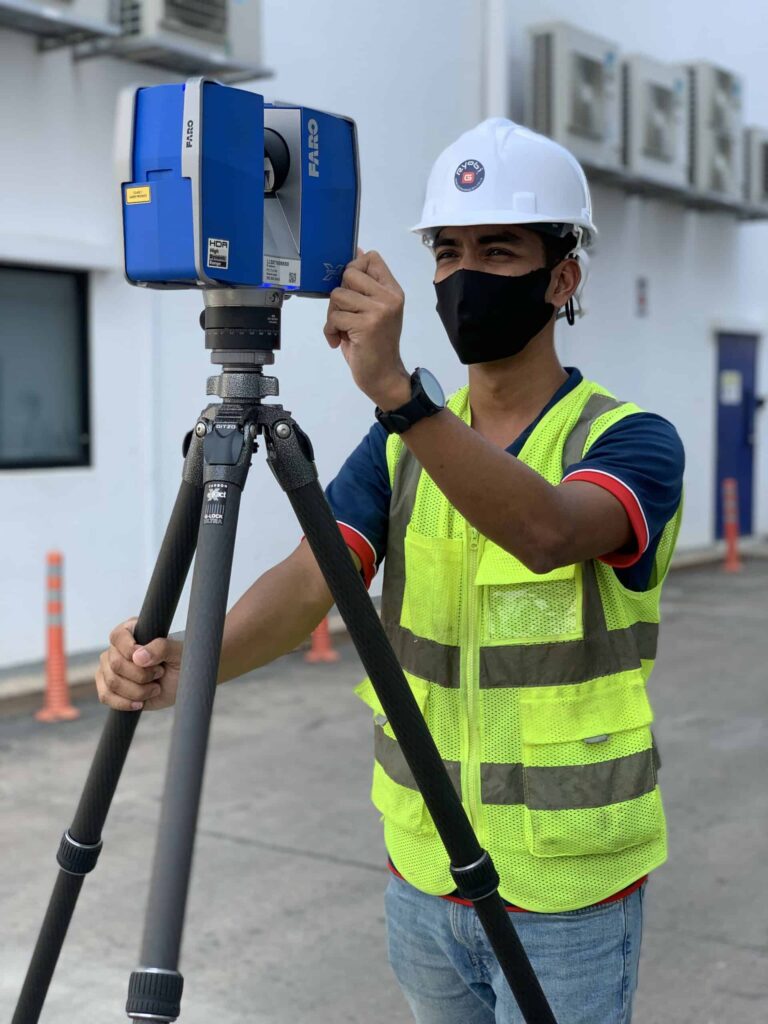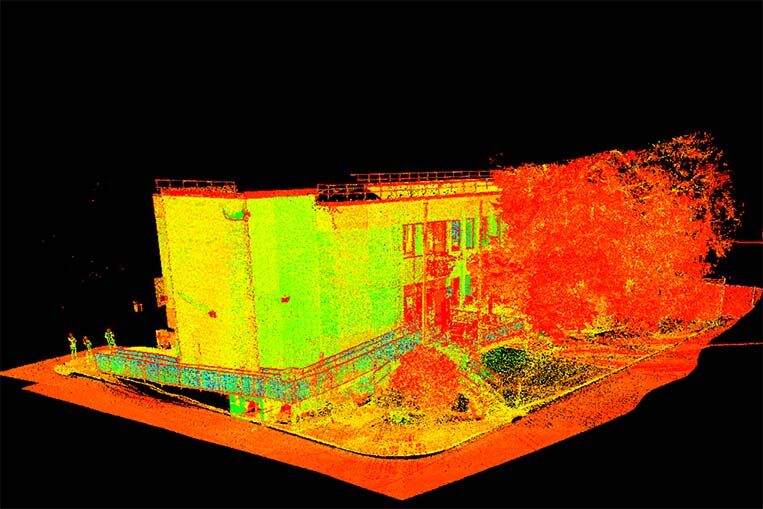Exactly How 3D Laser Scanning Revolutionizes Architectural Layout and Building And Construction Projects
3D laser scanning is changing the landscape of building design and building. This technology supplies unmatched accuracy in catching existing settings, which facilitates far better project preparation and implementation. It minimizes mistakes while improving efficiency in numerous stages of growth. The implications for collaboration amongst engineers, engineers, and other stakeholders are significant. These developments open up the door to brand-new design possibilities and ingenious solutions. What lies ahead for this developing modern technology?
The Basics of 3D Laser Scanning Innovation
3D laser scanning innovation may seem complex, its core concepts are transformative and straightforward for architectural style. This innovation uses laser beams to capture precise measurements of physical frameworks, producing a detailed point cloud that represents the scanned environment. A laser scanner gives off quick pulses of light, determining the moment it takes for the light to return, which permits the estimation of ranges with remarkable accuracy.
The resulting factor cloud can be transformed right into a 3D design, giving engineers with very useful aesthetic data. This design makes it possible for experts to examine and adjust layout aspects within their jobs, enabling cutting-edge options and enhanced visualization. By using 3D laser scanning, engineers can much better comprehend the status quo of a site, making sure that new designs integrate with their surroundings. This combination of innovation into building design notes a significant innovation, fostering creative thinking and accuracy in the field.

Enhancing Accuracy and Efficiency in Architectural Projects
As architectural tasks increasingly demand precision and speed, 3D laser scanning arises as an essential device in boosting both precision and performance. This modern technology captures millions of information factors in a short duration, producing in-depth and exact 3D models of existing structures. The ability to obtain precise measurements minimizes the danger of errors during the layout stage, permitting engineers to envision their tasks with exceptional clearness.
The rapid information collection process decreases the time spent on-site, enabling groups to concentrate on analysis and style renovations. With real-time data schedule, changes can be made promptly, promoting a more structured operations. The integration of 3D laser scanning into architectural techniques not only enhances dimension precision however also enhances the overall project timeline, helping with quicker decision-making. In a sector where precision is crucial, this innovation stands as a transformative force, raising the standards of building style and construction jobs.
Improving Collaboration Amongst Stakeholders
While typical architectural processes often entail fragmented interaction amongst stakeholders, 3D laser scanning promotes an extra cohesive joint environment. By providing exact, high-resolution data, this modern technology permits engineers, customers, designers, and contractors to operate from a unified factor of recommendation. The comprehensive visualizations produced via laser scanning remove misinterpretations and uncertainties, making certain that all events have accessibility to the exact same info.
This openness boosts decision-making and urges prompt responses, as stakeholders can easily imagine style elements and spatial partnerships. In enhancement, the integration of 3D scanning data into Structure Information Modeling (BIM) platforms even more enhances partnership, allowing for real-time updates and adjustments. Such smooth interaction not just decreases conflicts but also accelerates project timelines, as all stakeholders remain lined up throughout the design and building and construction phases. Eventually, 3D laser scanning transforms typical operations into an extra reliable and collective process, benefiting all parties entailed.
Opening Creative Possibilities in Layout
By making it possible for designers to picture intricate elaborate details and spatial relationships, 3D laser scanning reveals imaginative possibilities in style. This innovation enables precise mapping of existing settings, allowing designers to check out innovative principles that may have formerly seemed not practical. With extremely accurate information, designers can try out non-traditional kinds and products, pushing the borders of traditional style.
The assimilation of 3D laser scanning into the design procedure fosters partnership amongst multidisciplinary teams, urging the exchange of concepts and improving creative thinking. The thorough visualizations created by this modern technology not only help in determining possible design difficulties yet also motivate options that could not have been taken into consideration. Because of this, engineers can create a lot more dynamic and appealing areas that reverberate with users while satisfying useful requirements. Eventually, 3D laser scanning changes the building landscape, equipping developers to recognize their visions with extraordinary precision and creativity.
The Future of 3D Laser Scanning in Architecture and Construction
The assimilation of 3D laser scanning right into architectural design not only enhances imagination however additionally establishes the phase for its advancing role in the future of design and building. As modern technology advancements, the precision and performance of laser scanning will certainly proceed to boost, enabling building contractors and engineers to develop much more complicated designs with accuracy - 3D Scanning. Using this modern technology in real-time information collection will certainly promote far better decision-making, minimizing mistakes and enhancing process
Future applications may include increased and virtual fact combinations, enabling stakeholders to imagine projects in immersive environments. In enhancement, as sustainability comes to be a concern, 3D laser scanning will support the growth of energy-efficient layouts by giving in-depth insights into existing frameworks. As cooperation amongst different disciplines becomes even more essential, the capacity to share exact 3D models will certainly cultivate technology and improve project end results. navigate to this website Eventually, 3D laser scanning will redefine standards in building design and construction techniques.
Frequently Asked Questions
What Is the Price of Carrying Out 3D Laser Scanning Technology?

Exactly how Long Does a Common 3D Laser Scanning Project Take?
A typical 3D laser scanning task can take anywhere from a couple of hours to numerous days, relying on variables such as the task's dimension, complexity, and the degree of detail needed for precise data capture.
What Kinds Of Projects Advantage Many From 3D Laser Scanning?
3D laser scanning benefits numerous tasks, especially massive constructions, historical reconstructions, and complicated restorations. It improves accuracy in dimensions, decreases errors, and gives detailed information crucial for reliable preparation and execution in architectural design and building and construction.

Are There Particular Software Program Programs Required for 3D Laser Scans?
Yes, specific software programs are vital for refining 3D laser scans. 3D Scanning. Popular alternatives consist of Autodesk Wrap-up, Faro Scene, and Leica Cyclone, each offering unique functions tailored for visualizing and evaluating scanned data successfully in different tasks
How Does 3D Laser Scanning Impact Environmental Sustainability in Construction?
3D laser scanning enhances environmental sustainability in building and construction by reducing material waste, enabling accurate measurements, and advertising efficient resource usage. This modern technology permits for far better preparation, lowering the eco-friendly impact of building jobs via improved precision and effectiveness.
3D laser scanning is transforming the landscape of architectural layout and construction. read review 3D laser scanning modern technology might seem complex, its core concepts are transformative and simple for architectural design. By making it possible for designers to picture complicated spatial relationships and intricate details, 3D laser scanning exposes innovative possibilities in design. The assimilation of 3D laser scanning right into the design procedure fosters collaboration amongst multidisciplinary teams, urging the exchange of ideas and improving imagination. The combination of 3D laser scanning into building design not just boosts imagination but likewise sets the phase for its progressing function in the future of style and building.